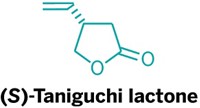Advertisement
Grab your lab coat. Let's get started
Welcome!
Welcome!
Create an account below to get 6 C&EN articles per month, receive newsletters and more - all free.
It seems this is your first time logging in online. Please enter the following information to continue.
As an ACS member you automatically get access to this site. All we need is few more details to create your reading experience.
Not you? Sign in with a different account.
Not you? Sign in with a different account.
ERROR 1
ERROR 1
ERROR 2
ERROR 2
ERROR 2
ERROR 2
ERROR 2
Password and Confirm password must match.
If you have an ACS member number, please enter it here so we can link this account to your membership. (optional)
ERROR 2
ACS values your privacy. By submitting your information, you are gaining access to C&EN and subscribing to our weekly newsletter. We use the information you provide to make your reading experience better, and we will never sell your data to third party members.
Biological Chemistry
Sparking A Sign Of Life
Crystal Growth: Specialized light source drives formation of optically pure amino acid derivatives
by Carmen Drahl
November 2, 2009
| A version of this story appeared in
Volume 87, Issue 45
Each set of building blocks for life on Earth has a signature handedness, and researchers have speculated that circularly polarized light (CPL) from outer space is one potential source of that uniformity. Inspired by that possibility, Dutch researchers have demonstrated its feasibility by combining CPL and mechanical grinding to determine the chiral fate of a small molecule (Nat. Chem., DOI: 10.1038/nchem.416).
The team believes the work has implications for origin-of-life research studies and could lead to a better understanding of how organic molecules interact with light.
Shining CPL, which corkscrews either left or right, on an equal mixture of a chiral molecule’s two mirror-image forms generates a tiny excess of one form, or enantiomer. Researchers have previously amplified that CPL-generated imbalance to obtain a pure sample of one enantiomer. However, the process is far from systematic.

Now, Wim L. Noorduin and Elias Vlieg of Radboud University, in Nijmegen; Bernard Kaptein of DSM Pharmaceutical Products, in Geleen; Richard M. Kellogg of contract research company Syncom, in Groningen; and coworkers have achieved chiral resolution by pairing CPL with a chiral amplification method they developed previously. The earlier method induces chirality by combining a base, which causes interconversion between enantiomers in solution, with abrasive grinding of a suspension of crystals, reminiscent of crashing waves on the rocks or sand of a primitive Earth.
The team exposed racemic crystal mixtures of an amino acid derivative to CPL and then initiated grinding. They obtained chirally pure crystals of either enantiomer on demand, with the rotation sense of the light determining the chirality of the product.
Their results suggest that CPL initially generates a chiral product that selectively blocks crystallization of one of the enantiomers. Identifying that product will be a key next step, Vlieg says.
“CPL photochemistry certainly provides a feasible mechanism to get homochiral amino acids under prebiotic conditions, and this work provides an experimental demonstration of at least part of such a scenario,” says Ben L. Feringa, who explores chirality’s origins at the University of Groningen, also in the Netherlands.






Join the conversation
Contact the reporter
Submit a Letter to the Editor for publication
Engage with us on Twitter